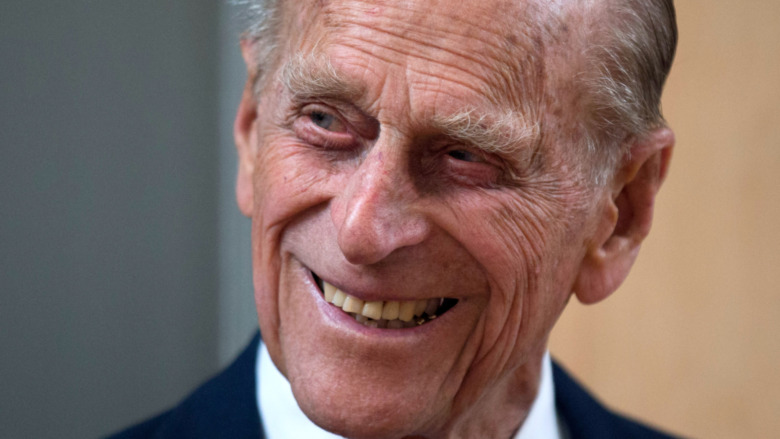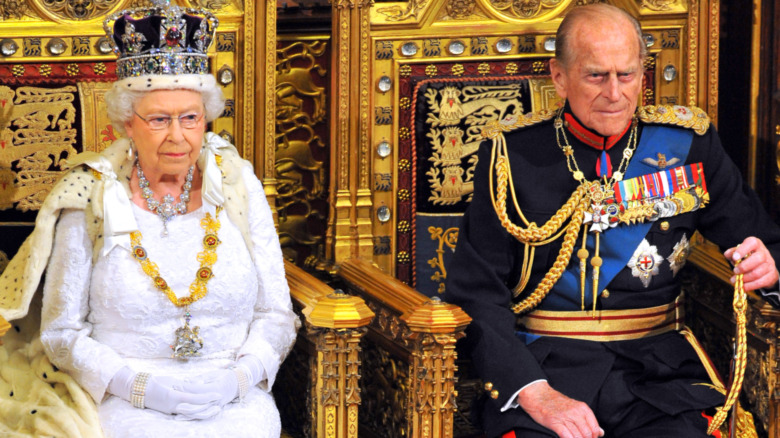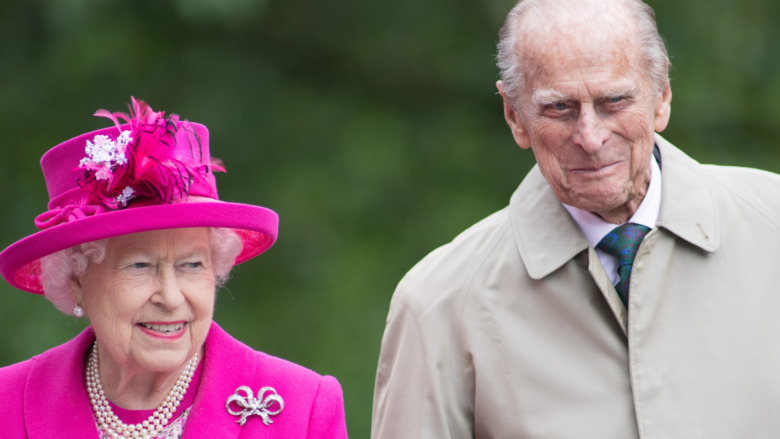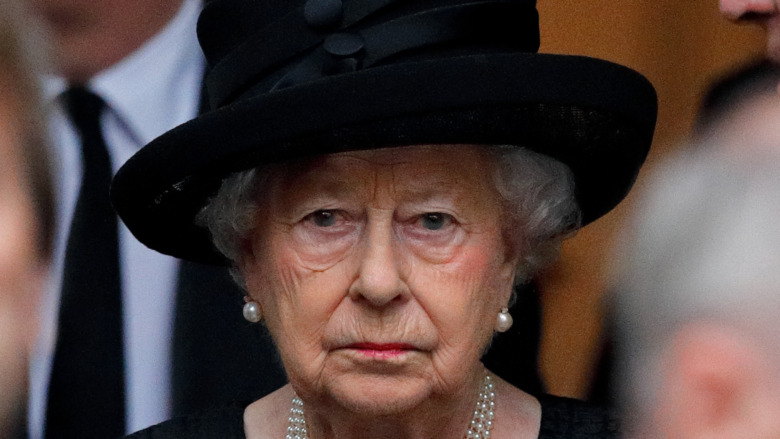The Real Reason Prince Philip's Body Will Be Moved When The Queen Dies
Prince Philip died on April 9, 2021, and will be laid to rest on April 17, 2021, following a funeral service held at St George's Chapel on the grounds of Windsor Castle. Philip's casket will be lowered into a hidden vault, located beneath the chapel, according to the Daily Mail. The Duke of Edinburgh will become the 25th royal to be buried at this location, joining George III, George IV, George V of Hanover, and William IV. The most recent royal to be interred in the vault before Philip was Princess Augusta, back in 1930, according to The Sun.
The vault was built between sometime 1804 and 1810 at King George III's request. In order to be placed in the royal vault, the coffin is lowered "through an opening in the floor of St George's Chapel," The Sun reports. This process usually occurs at the funeral. Philip's casket will remain at the 200-year-old vault until his wife, Queen Elizabeth, dies. At that time, his casket will be moved. Read on to find out why.
Prince Philip's casket will be moved to King George VI Memorial Chapel after Queen Elizabeth dies
Although Prince Philip will be interred at the royal vault, this will not be his final resting place. According to The Sun, Philip's casket will be moved to King George VI Memorial Chapel, where his wife will eventually be buried with her parents, King George VI, who died in 1952, and the Queen Mother, who died in 2002, and Queen Elizabeth's sister, Princess Margaret, who also died in 2002. Although Margaret was cremated, her ashes are with her parents at the Memorial Chapel, according to Hello! magazine. "The memorial chapel was added on to the north side of St George's behind the North Quire Aisle in 1969," the outlet reports.
King George VI and the Queen Mother lie in rest in a tomb with a black stone slab on the floor that features their names written in gold, along with the years of birth and death for each of them. Since Queen Elizabeth will be buried with her family, Philip's casket will be moved after her death so that they can be together.
Where are other royal family members buried?
Although Queen Elizabeth II's immediate family lies in rest in King George VI Memorial Chapel, the rest of the royal family is buried all over the UK.
According to Express, the site of Prince Philip's funeral, St. George's Chapel in Windsor, was where Kings Edward IV, Henry VIII, and Charles I were buried. The chapel's Royal Vault has held the bodies of several kings, including George III, George IV, and William IV. Elsewhere in Windsor, many royals are buried on the grounds of the Frogmore House and Gardens. You'll recognize this property as the location of Prince Harry and Meghan Markle's wedding reception in 2018, per Tatler. Among those who were buried there are King Edward VIII (who famously abdicated the throne to marry divorcee Wallis Simpson, who he wed in 1937), Queen Victoria, and her husband, Prince Albert, according to Express.
Over in London, several royals have been buried in the famous Westminster Abbey, such as Elizabeth I, Charles II, and Queen Anne. In addition to royal family members, Sir Isaac Newton, who discovered gravity, was buried in the abbey, as well, according to its website. These burial traditions aren't the only ones the royals follow upon death.
After the funeral, the royal family will continue to mourn
Once Prince Philip has arrived in his temporary resting place in the St. George's Chapel, the British royal family will follow a strict set of mourning protocols, according to Express. Prince Philip's widow, Queen Elizabeth II, will continue to wear black, per the publication. After her husband died on April 9, 2021, at age 99, the Queen and the royal entered an official mourning period of eight days, but the full mourning period for the royals is 30 days. So, at that time, Queen Elizabeth II won't make any public appearances, per Express. Of course, she'll still complete her royal duties as Queen, but this protocol will give her the chance to work and mourn for her husband in private and away from the public.
Other British authority figures observed Prince Philip's death as well. Members of the UK Parliament wore black armbands and black ties during the mourning period, according to Express. In addition, several party and government leaders from the House of Lords paid tribute to the late royal on April 12.
But the most prominent tradition of all will reunite Prince Philip and Queen Elizabeth II after her death.




